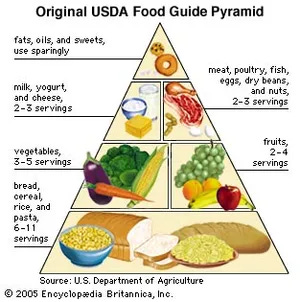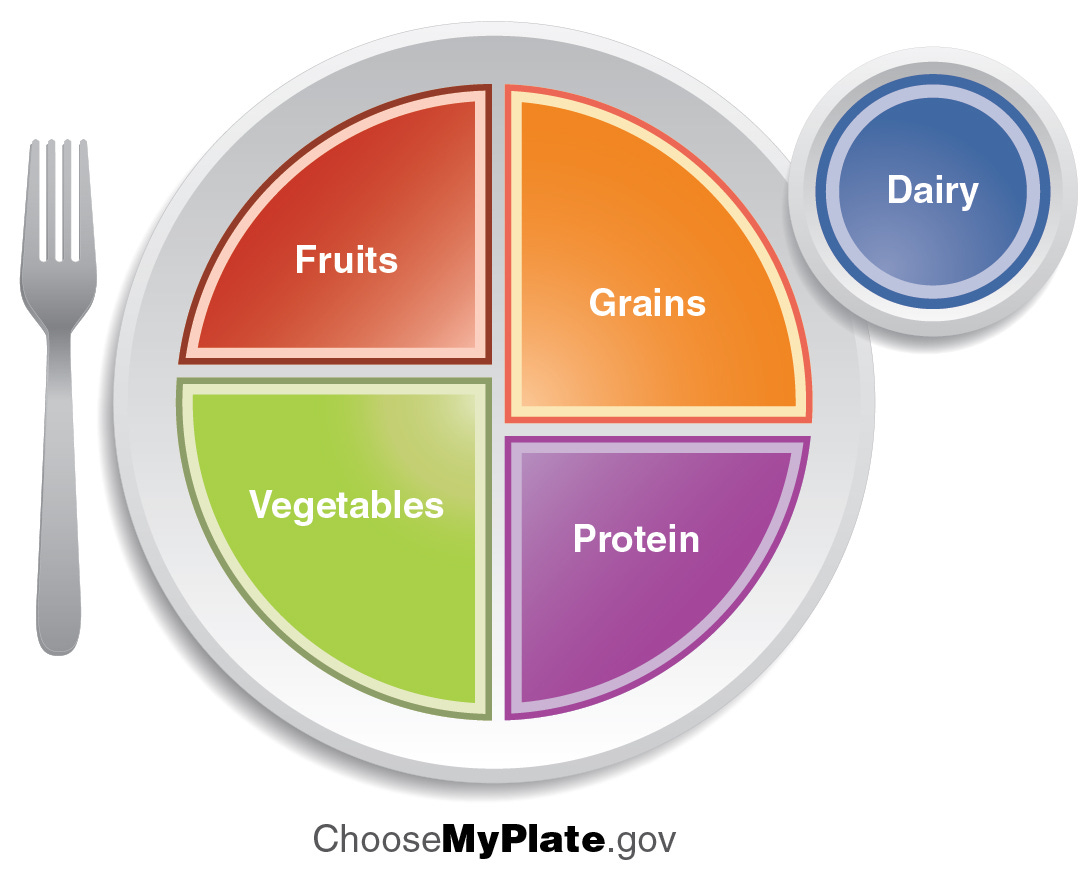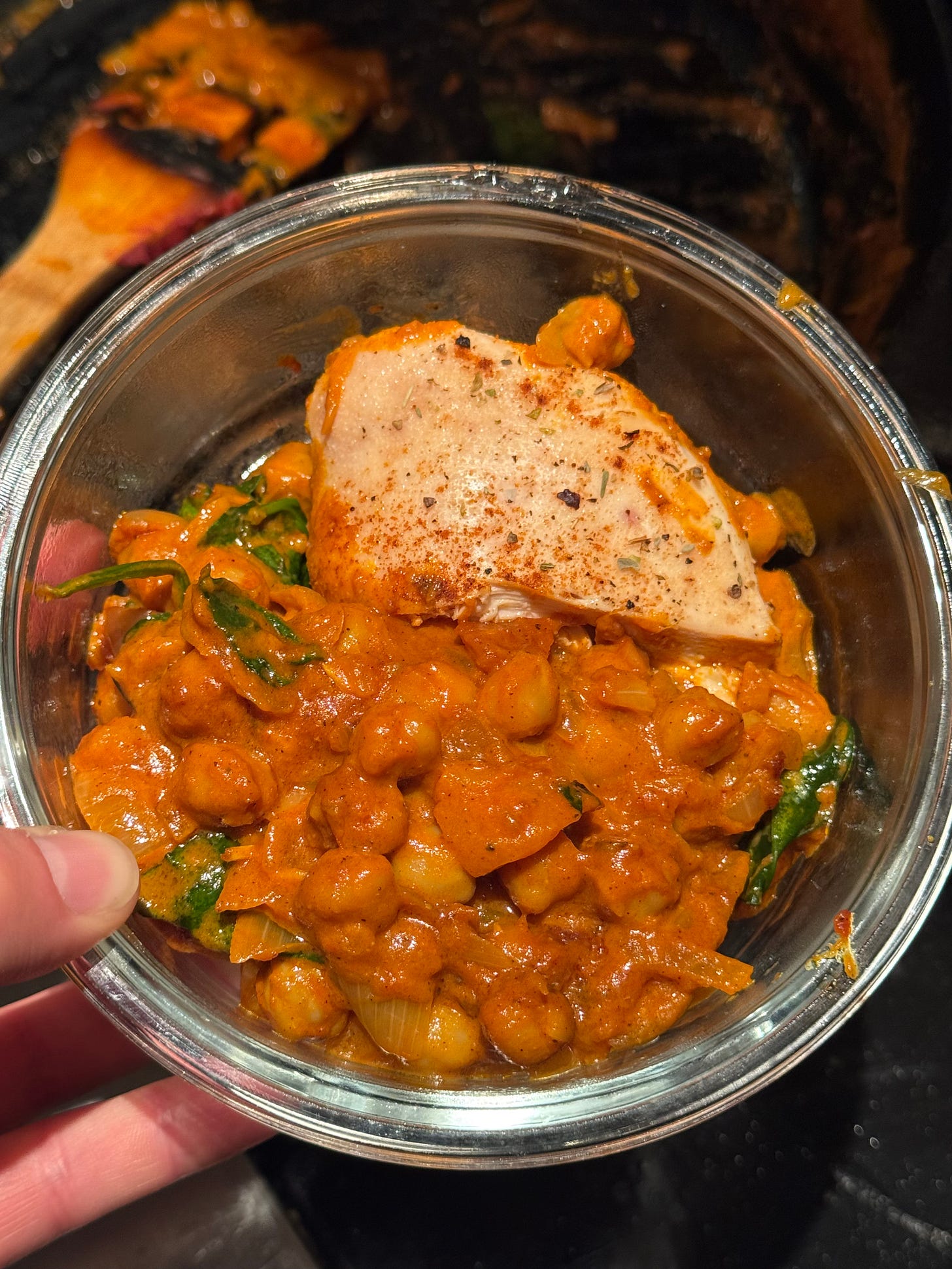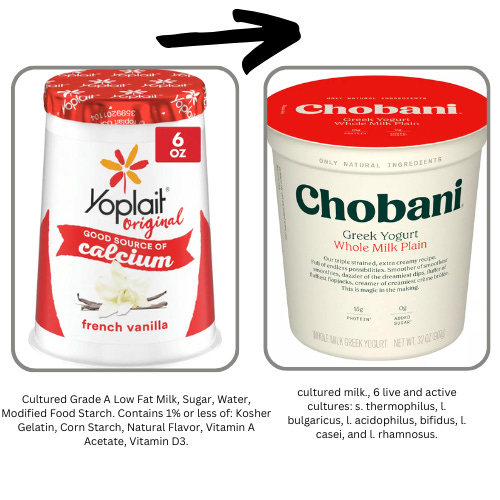I was at a party the other night and my acquaintance, who is only a few years older than I, told a story about his obsession with bread. As a young person growing up in Florida in the early aughts, he eagerly consumed bread more than once per day, because in his estimation, bread was incredibly healthy.
“I remember finishing multiple loaves per week,” he said. It was only when he got to college and began looking around at what others were eating, say lean meats and vegetables, that he began to question the validity of his nutrition framework.
As young people of the 1990s and early 2000s, we were exposed to a food pyramid that now seems rather misplaced, but at the time, was readily embraced.
Using this diagram I could have 11 servings of Honey Nut Cheerios a day and still self proclaim as a paragon of health!? To be sure, seven year old me would’ve wholeheartedly embraced this approach if my parents had allowed it. They, fortunately, did not abide by these standards and I was forced to endure foods like stir fry, bean salad and lamb stew (which incidentally, are all part of my contemporary diet).
I wanted to check in on what the 2025 food pyramid advised, but learned that the pyramid had been discontinued in favor of the “MyPlate” model. According to the MyPlate government website, “With the advancement of technology, MyPlate takes what we’ve learned from the Food Pyramid and now provides a personalized approach to healthy eating to help you meet your goals.”
You’ll notice that the diagram advocates for relatively similar quantities of food from each group, with far less emphasis on grains (and if you dig deeper, it advises that at least half of those grains be whole grains).
With regards to dairy recommendations, the website nudges people to “move to low-fat or fat-free dairy milk or yogurt.” Huh?
This feels like a vestige of the 1960-90’s obsession with low-fat and fat-free everything. Often, fat is replaced with sugar and this process renders dairy not nearly as filling. I have a hard time believing that low-fat and fat-free is, by default, healthier.
If you want to go down that rabbit hole, check out this study for starters: The dairy fat paradox: Whole dairy products may be healthier than we thought.
As I was reading through the MyPlate page, I also became curious if the average person is aware of the extent that food lobbying and private interests influence government recommendations.
For example, following New York’s 2012 proposal to ban extra-large sodas in 2012, reported in the New York Times, “…the Academy of Nutrition and Dietetics cited “conflicting research” and didn’t support the effort. The academy accepted $525,000 in donations from Coke in 2012. The following year it took a $350,000 donation from the company.”
Examples like these color every facet of government recommendations and it’s both hugely problematic and largely clandestine. It’s a topic worthy of a book or two (and several have been written on the subject), but I want to at least acknowledge that government recommendation require a degree of scrutiny.
So, what to do with the morass of government directed nutrition recommendations?Take it with a grain of salt + keep coming back here as we try to make sense of it all.
I’m curious, what nutrition guidelines, if any, do you follow?
Cooking affordable meals that are decidedly not ultra processed is doable and I want to show you how, dammit! Each newsletter, I’ll share one recipe to get your creative cooking juices ~flowing~.
Have you heard of buttered chickpeas? I was new to the game when my friend and I made this meal the other weekend but DAMN it’s good and uses an array of affordable and pantry centric ingredients. I had a bit of chicken on the side.
Buttered Chickpeas
Ingredients:
13.5 oz can of chickpeas
12.5 oz can of coconut milk
2 Tbsp butter
6 oz can of tomato paste
Rice
Garam masala or other spices
salt
Optional: add in vegetables like spinach, riced cauliflower, or onion.
Directions: Place your rice and water in a rice cooker and set to cook. Combine chickpeas, coconut milk, butter and tomato paste in a saucepan over low heat. After it’s simmering, add your spices and salt to taste. Cook for about 10 minutes, then remove from heat and pour over rice. You can top with yogurt and cilantro if you like!
I encourage you to flip around the label on your favorite packaged foods. Doing this is one step towards in decreasing the amount of ultra processed foods you’re regularly consuming. Here’s one switch I’d consider making:
Is it ice cream or yogurt…I like having control over how much sugar is in the food I eat. That’s why I gravitate towards plain and unsweetened things, so if I do want to add some sweetness, with maple syrup, date syrup or honey, I can choose exactly how much. The option on the left has 20 g of sugar vs 6 g on the right. I also try to avoid gums wherever possible, as these do undergo extensive processing and don’t always sit well in my stomach. And lastly, whole milk all the way because it keeps me full for longer!
Learn more about the author here. Thanks for letting me riff about the food topics that keep me up at night!










Yay!